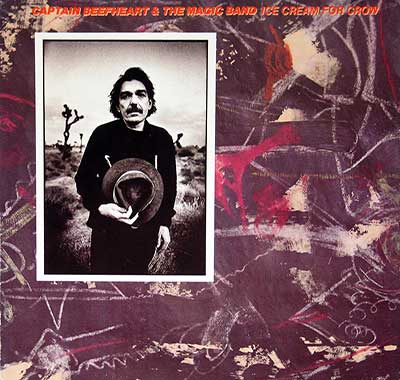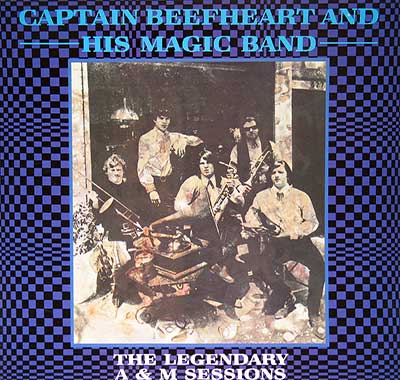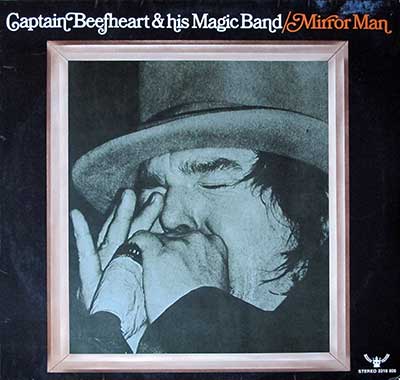Don Van Vliet, better known as Captain Beefheart, was a cosmic oddity in the American music scene, a mad hatter of rock ‘n’ roll who defied norms and smashed conventionality into jagged shards. Born Don Glen Vliet on 15 January 1941 in Glendale, California, he embarked on an artistic odyssey that spanned over four decades, marked by an unyielding drive for experimentation, a vision that never bent to commercial winds, and a sound that remains unclassifiable.
Early Life and Musical Influences
Early Life and Musical Influences
In the dusty expanse of Lancaster, California, young Van Vliet displayed a prodigious knack for sculpting and painting, hinting early on at the multifaceted artist he would become. He was a wunderkind, creating life-like animal sculptures that caught the eye of Portuguese sculptor Augustinio Rodriguez. But the siren call of music soon drowned out all else. The blues, R&B, and free jazz seeped into his bones, shaping a sonic palette as wild as the Mojave Desert winds. His friendship with Frank Zappa, a fellow high school maverick, was a rollercoaster of collaboration and rivalry, each pushing the other towards greater audacity. Their interactions were like the meeting of two mad scientists, concocting a musical formula that would explode into the world with revolutionary force.
Early Life and Musical Influences
Captain Beefheart and the Magic Band
Early Life and Musical Influences
1964 saw the birth of Captain Beefheart, a persona as bizarre and intriguing as a Salvador Dalí painting. He assembled the Magic Band, a revolving door of musicians who dared to tread his labyrinthine musical paths. What they conjured was a sound unlike any other—blues, rock, psychedelia, and avant-garde all tangled together in a glorious, chaotic knot. Beefheart’s voice was a gravelly roar, his lyrics a surrealist’s dreamscape, and the Magic Band’s instrumentation a virtuosic yet unpredictable storm.
Early Life and Musical Influences
Musical Legacy
Early Life and Musical Influences
The late '60s and '70s were Captain Beefheart’s playground of innovation. Albums like "Safe as Milk" (1967) and "Trout Mask Replica" (1969) were not mere records but challenges to the very fabric of rock music. The latter, produced by Zappa, was a cacophonous double album recorded under conditions that were as legendary as the music itself—rehearsed to perfection in a claustrophobic house, with band members under Beefheart’s strict, almost dictatorial direction. "Lick My Decals Off, Baby" (1970) and "Shiny Beast (Bat Chain Puller)" (1978) continued this aural assault, their complex rhythms and dissonant harmonies bewildering and delighting in equal measure. Each release was a step further into uncharted territory, a daring leap away from the safe confines of the mainstream.
Early Life and Musical Influences
The 1980s and Beyond
Early Life and Musical Influences
As the '80s dawned, Beefheart’s musical ventures became fewer, his focus shifting to his first love: visual art. His paintings, as idiosyncratic as his music, gained him acclaim in the art world. Yet, he was not done with music entirely. "Ice Cream for Crow" (1982) and "Doc at the Radar Station" (1980) showed a brief return to form, marrying a more accessible sound with his ever-present experimental edge. His paintings, often abstract and vibrant, were exhibited in galleries worldwide, solidifying his status as a versatile and talented artist.
Early Life and Musical Influences
Personal Life and Later Years
Early Life and Musical Influences
Eccentric, reclusive, and demanding—these words barely scratch the surface of Beefheart's persona. As a bandleader, he was notorious for his high standards and unorthodox methods. Tales of his band’s rehearsals, where they would play the same passage for 14 hours straight, are the stuff of legend. Struggles with mental health shadowed his life, and in later years, multiple sclerosis cruelly curtailed his physical abilities. On 17 December 2010, Van Vliet passed away in Arcata, California, leaving behind a legacy as jagged and enduring as his music.
Early Life and Musical Influences
Legacy
Early Life and Musical Influences
Captain Beefheart’s influence on the musical landscape is seismic. He stands as a beacon of experimental rock, an inspiration to countless musicians who seek to break free from the mundane. His music is a testament to originality and audacity, a reminder that true art often exists on the fringes. Though mainstream success eluded him, the fervent loyalty of his fans and the high regard of his peers cement his place as one of the most innovative figures in the annals of music history.


